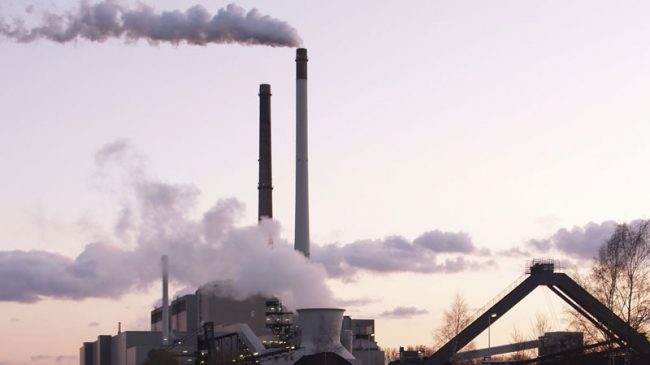To great fanfare, the White House recently released its final “Clean Power Plan,” which seeks to reduce carbon dioxide emissions from electricity generation. The Obama administration also released a 343-page “regulatory impact assessment,” which purports to detail the Clean Power Plan’s costs and benefits. But as I show in a new study for Reason Foundation, one of the key assumptions underlying that assessment, the so-called “social cost of carbon,” is deeply flawed. As a result, the administration has massively exaggerated the benefits from reducing carbon dioxide emissions. Under more realistic assumptions, the plan would fail a basic cost-benefit test.
The Clean Power Plan is the latest in a series of federal regulations targeting emissions of greenhouse gases. Under federal law, agencies proposing new regulations are required to assess their costs and benefits. Since 2010, federal agencies have counted the benefits of reducing greenhouse gas emissions by multiplying the estimated total reduction of such emissions (measured in tons) by the “social cost of carbon” (measured in dollars per ton).
The group of federal agencies that developed the social cost of carbon (SCC), known as the Interagency Working Group, gave a range of estimates for the SCC that depend on: the year during which the emissions occur (the SCC is assumed to rise over time), the discount rate (the rate at which society is assumed to be willing to forego current consumption in return for future consumption – the higher the discount rate, the lower the SCC) and the degree to which climate change is expected to cause harm (the greater the expected harm, the higher the SCC).
In the original analysis by the Interagency Working Group, published in 2010, estimates of the SCC for the year 2015 ranged from $5.70 per ton of carbon dioxide (for the “median” forecast of climate change impact discounted at 5 percent) to $64.90 per ton (for the “95th percentile” forecast discounted at 3 percent). This analysis was heavily criticized, with some saying the estimates were too high, others that they were too low. In 2013, the Interagency Working Group revised its estimates of the SCC twice. In the May 2013 revision, the “median” forecast, assuming a 5 percent discount rate had doubled to $12 per ton (from $5.70 a ton in the 2010 estimate). In a minor revision made in November 2013, this was reduced to $11 per ton. The SCC was again revised slightly in July 2015 (but no change was made to the aforementioned “median” forecast discounted at 5 percent).
While the Interagency Working Group increased its estimates of the SCC between 2010 and 2013, academic economists using the same models generally did not. Moreover, the trend in estimates has been declining over the long-term. In 2011, Professor Richard Tol – one of the world’s leading experts on the economics of climate change and the developer of one of the three models used by the Interagency Working Group – produced a meta-analysis of 311 estimates of the social costs of carbon and found that the “mean” estimate fell consistently from 1992 to 2011, which as he notes “suggests that estimates of the impact of climate change have become less dramatic over time.” Moreover, the proportion of estimates of the SCC that are negative — implying that additional carbon dioxide has net benefits – has increased over time.
If one were to base the social cost of carbon on these models alone, it would be very difficult to justify a rate of more than a few dollars. But the models are really no better than the assumptions built into them. And if those assumptions are wrong, so are the conclusions. As the old saying goes: garbage in, garbage out.
One assumption that is particularly problematic concerns the relationship between increases in carbon dioxide concentrations and increases in temperature – known as climate sensitivity. In its assessment, the Interagency Working Group assumed the same range for climate sensitivity as did the Intergovernmental Panel on Climate Change (IPCC) in its 2007 assessment. But since 2010 several studies have shown that the actual temperature change since 1990 has been about half that of the lowest forecasts made using the IPCC’s models.
A likely explanation for the failure of the climate models is that they assume the climate is more sensitive to increases in carbon dioxide than is actually the case. This is supported by several recent studies, which suggest that climate sensitivity is lower than even the lowest estimate assumed by the Intergovernmental Working Group. The IPCC implicitly acknowledged this in its 2013 update, which reduced the bottom of its range of estimates of future warming, but the Interagency Working Group ignored it in its own updates.
A further significant problem with the Interagency Working Group assessment of the social cost of carbon is that it is based on highly pessimistic assumptions concerning the ability of humanity to adapt to climate change. While one of the three models used by the group assumes that adaptive capacity will increase over time and in response to climate change, the others do not. Yet human adaptive capacity has been increasing at a rapid rate, making us less susceptible to a range of climate-related problems than at any time in the past. This is likely to continue.
Take food production. Pessimists claim that climate change is already reducing food availability. But the trend is in the opposite direction. Over the course of the past half-century, improvements in agricultural technology have dramatically increased food production. For example, cereal yields have nearly tripled, from 0.6 tons per acre in 1961 to 1.7 tons per acre in 2013. As a result, per capita food availability is greater and fewer people die today from malnutrition than 50 years ago in spite of a doubling of the world’s population. New technologies available today – but not yet widely adopted – enable farmers to grow food in hotter, drier, and saltier soils than was previously possible. As new technologies continue to be developed and adopted, it seems almost certain that yields will continue to increase even as the world becomes warmer.
Diseases that are affected by climate have also been on the decline. Until the early 1900s, each year about 1 in every 1,000 people contracted typhoid fever in the U.S. – and about 20 percent of those, most of them children, died. By 1920 the incidence had fallen to 1 in 2,500 and by 1960 it affected fewer than 1 in 100,000 people. This decline was largely a result of improvements in, and more widespread disinfection of, drinking water.
Deaths from heat have also been falling in the U.S. in spite of increases in temperature. In 1987, 50 of every 1,000 deaths were attributable to heat; by 2005 that had fallen to 19 per 1,000 deaths. Much of this reduction in heat-related mortality was a result of more widespread use of air conditioning. But other factors, including better treatment for heart attacks, also contributed.
While extreme weather events such as hurricanes and droughts continue to cause disease and misery, not to mention destruction of property, they have become far less deadly. Across the world, improvements in nutrition, water availability, access to health care and other factors associated with economic development have reduced the mortality rate from extreme weather events by more than 90 percent since 1920.
Over the past half-century, trade, technological progress and associated economic growth have lifted billions out of poverty. Indeed, there are fewer people in the world living in absolute poverty today than at any time since 1820, even though the population has grown seven-fold in that time. Over the coming decades, billions more people in Africa, Asia and Latin America will likely escape from poverty. With this increase in wealth will come better access to clean drinking water and sanitation, better health care, more widespread use of air conditioning and other technologies that have already reduced humanity’s vulnerability to climate change.
It is important to avoid Panglossian thinking. We do not live in the best of all possible worlds. Increased concentrations of carbon dioxide will likely impose costs on many people. However, many others will almost certainly benefit. Higher concentrations of carbon dioxide have already increased the rate of growth of most crops – and this is likely to continue. In a warmer world, growing seasons at higher latitudes will be longer, enabling additional crops to be grown. And warmer winters mean fewer deaths from cold, as well as lower heating bills.
So, to sum up: (1) estimates of climate sensitivity suggest that global warming is likely to be milder than even the lowest forecast made by the Interagency Working Group; (2) humanity’s ability to adapt to climate change will almost certainly be greater than even the most optimistic forecasts of the Interagency Working Group; (3) while there will undoubtedly be losers from global warming, there will also be winners and it is quite possible that additional carbon dioxide emissions will generate net benefits for humanity, at least until the end of this century.
This does not mean that the costs and benefits actually cancel each other out: the winners are unlikely to compensate the losers, though in an ideal world perhaps they should. (In a future paper, I intend to identify ways in which laws and policies might be crafted so as to achieve this more equitable end.) But the social cost of carbon is based on cost-benefit analysis and in that analysis, for better or worse, it does not matter whether the winners compensate the losers.
Attempting to use economic models to investigate such complex propositions is so fraught with difficulty that, on the basis of what we know today, to a first approximation the social cost of carbon is zero. That means every regulation promulgated by the White House under the presumption that the social cost of carbon is greater than zero, including the Clean Power Plan, must be re-evaluated.
Julian Morris is vice president of research at Reason Foundation and author of the study, “Assessing the Social Costs and Benefits of Regulating Carbon Emissions.”
Permission to reprint this column is hereby granted, provided that the author, Julian Morris, and Reason Foundation are properly credited.

